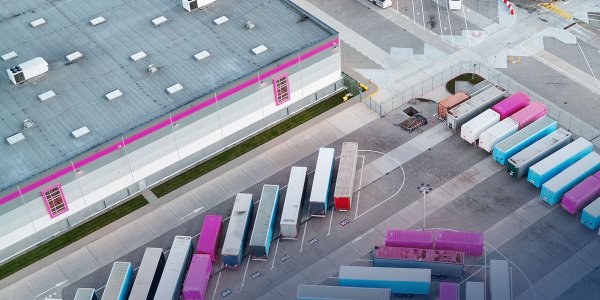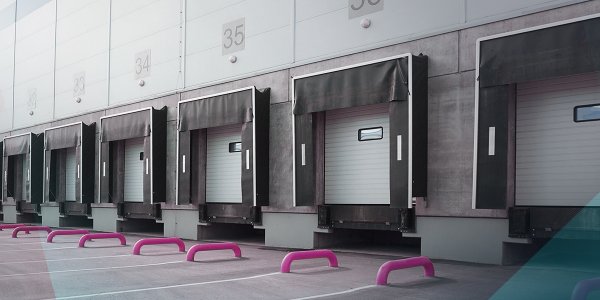Fully digital mapping of yard logistics enables a higher degree of automation and optimizes all processes in the yard. This automatically makes processes more efficient. Communication is also simplified, throughput times can be better calculated and resources can be saved. And last but not least: smart digital yard management increases safety in and around the site enormously.
Digital processes mean less paperwork and less walking in many places on the premises. The risk of accidents on site for truck drivers is also reduced if they hardly have to leave the cockpit at all, from arrival to loading and call-off to departure, because all the necessary information is transmitted digitally. As a result, there are hardly any points of interaction with the shipper's staff (e.g. with porters, gate offices, teams at the loading points, etc.), which usually saves an enormous amount of time. Employees only intervene in the processes in exceptional cases (management by exception) and can deploy resources elsewhere within the entire supply chain and focus on their core business. The aim of the digitalized yard management process is to enable truck drivers to carry out the entire outbound loading process on the factory premises independently and take care of themselves. From check-in to check-out.
Digital, smart yard management essentially consists of various components that are all coordinated, intertwined and cannot work without each other:
- Notification
- Control station with yard visualization
- Door and ramp control
- Loading point call-off
- Check-in and check-out
- Communication with the drivers
- Integration and interfaces
- Appointment scheduling
Connecting the elements is the be-all and end-all for efficient processes in the yard. If components such as check-in, appointment scheduling or loading point call-off are digitalized and can be managed jointly in one solution, this simplifies communication, processes as well as coordination and significantly increases transparency. As a result, everyone involved benefits from flexible and streamlined processes: Shippers, carriers and truck drivers.
Self-check-in - this is how efficient the process is
The actual process in the yard for drivers starts with check-in. The truck drives onto the factory premises and heads for the check-in terminal. Ideally, the self-service terminal is aligned at truck operating height so that the drivers do not have to leave their cabs to view and operate the screen. A license plate camera captures the truck license plate from the front via infrared and recognizes the vehicle. If no camera is in use, the drivers enter the relevant reference number to identify the order. The yard receipt is assigned in the background. The system plans and calculates the truck's onward journey and communicates the next steps to the driver. Another camera scans the rear of the vehicle and registers the trailer's license plate number, which is important for the customs documents and is saved or stored accordingly.
Whoever says A must also say B
The truck is now called off and loaded before it finally goes to check-out. The efficient set-up from check-in is repeated: the drivers scan the ticket they received at check-in and start the check-out process. All data is sent to the connected transport management system (e.g. SAP) via an API. Here, too, all processes are efficiently interconnected in real time. The check-out also triggers the processing and storage of the data as well as the creation of the CMR consignment note. These legally required freight documents are printed out using the network printer integrated into the terminal, so that drivers can pick up the documents without annoying waiting times. What's more, the drivers do not have to leave the vehicle and go to an office for this either. Another plus point in terms of time savings, but also safety.
Yard logistics? Preferably smart!
"The contactless smart yard process with self-check-in reduces both the risk of accidents and the risk of infection with diseases such as COVID-19 on the factory premises, as drivers no longer have to leave their vehicle. In my opinion, a smart yard is urgently needed in every logistics system."
We <3 efficiency
Here is an overview of the benefits of a Smart Yard in terms of safety and efficiency:
- Less personal contact between different employees. Reduced risk of infection.
- Lots of traffic on the factory premises - not a safe place for pedestrians. So it’s better if you don’t have to leave your vehicle. Thanks to self-check-in, this is possible.
- Nobody is dependent on anyone else. No waiting times, no communication barriers, no misunderstandings - both in internal and external interaction.
A smart yard therefore pursues several goals at once: reducing waiting times for truck drivers and all staff, optimizing the utilization of loading points, speeding up throughput times and, above all, increasing safety for everyone involved.

